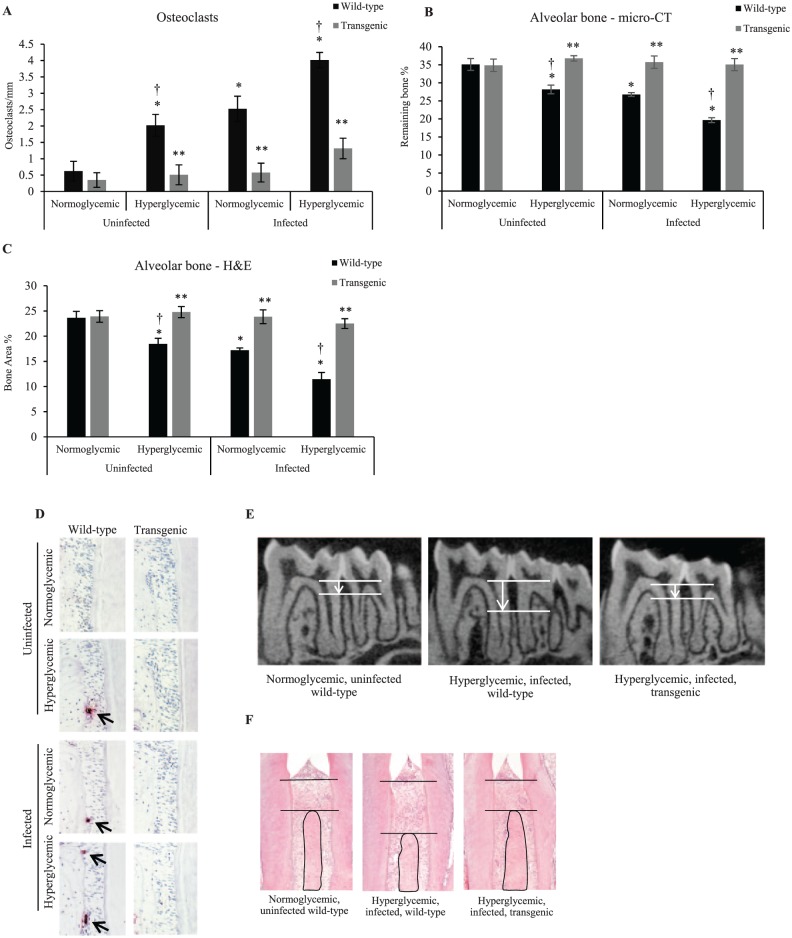Figure 5.
Normoglycemic and diabetic transgenic mice with dominant negative inhibition of NF-κB have reduced osteoclast numbers and alveolar bone loss. Diabetes and periodontitis were induced in wild-type and transgenic (Col1α1.IKKDN) mice by streptozotocin injection and oral inoculation. All mice were euthanized 6 wk after completion of oral bacterial inoculation. (A, D) TRAP analysis were carried out to measure the osteoclasts (arrows) identified as multinucleated cells harboring on the bone surface. (B, E) Micro-CT analysis of remaining bone (the different lengths of arrows indicate the difference in alveolar bone height) between the molars in the mandible. (C, F) Bone area was measured in H&E-stained sections between the molars in the mandible. *P < 0.05 (vs. uninfected normoglycemic group). **P < 0.05 (vs. matched wild-type group). †P < 0.05 (vs. matched normoglycemic group). H&E, hematoxylin and eosin; micro-CT, micro–computed tomography; NF-κB, nuclear factor kappa B; TRAP, tartrate-resistant acid phosphatase. Error bars indicate SEM.

